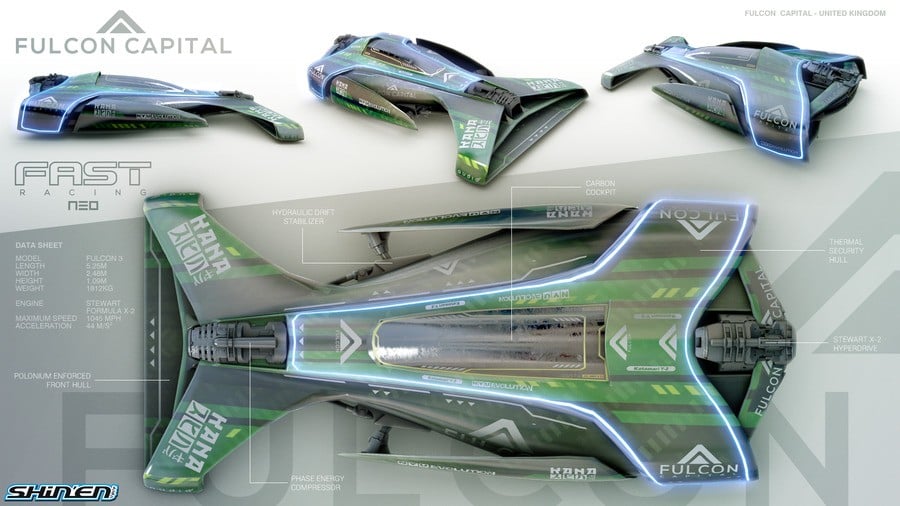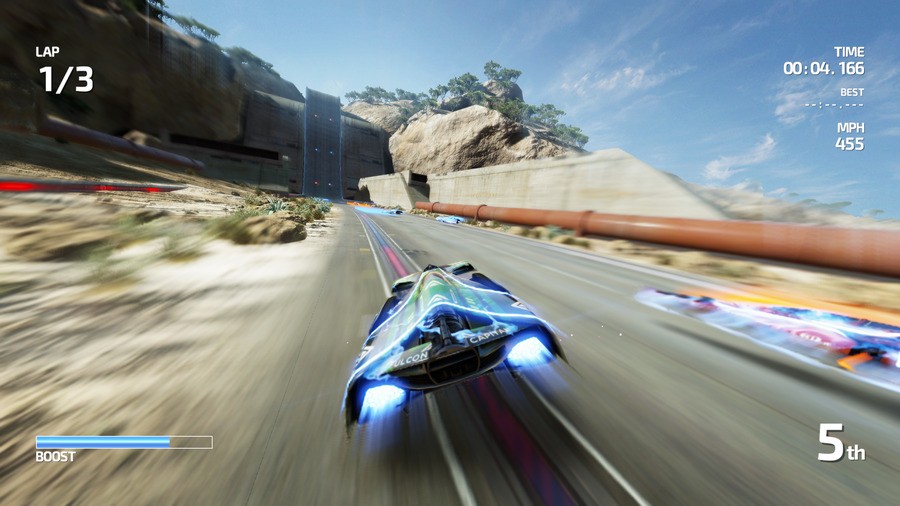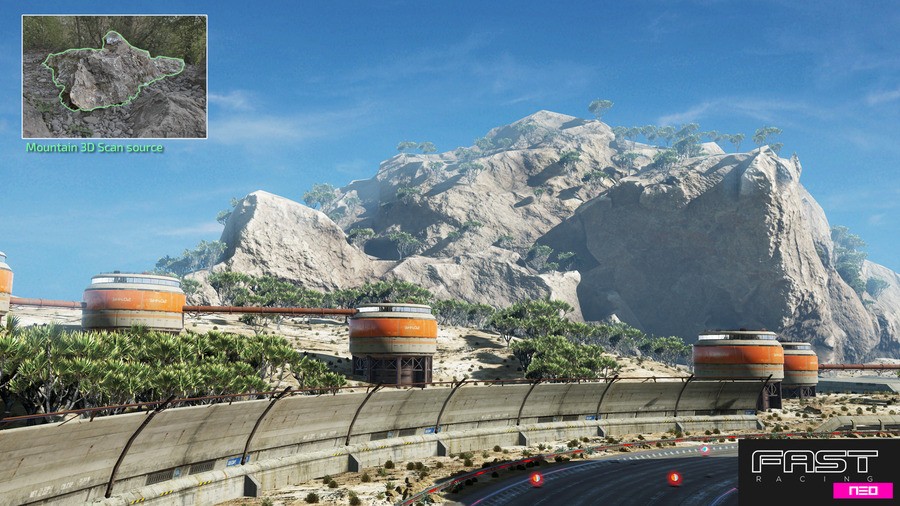FAST Racing NEO is certainly set to be one of the year's biggest Wii U eShop releases, with its arrival due on 10th December. Shin'en Multimedia has established itself as a leading 'Nindie' developer capable of producing wonderful visuals and strong gameplay, while sci-fi racing is a genre that's been long-neglected on Nintendo hardware. Though Shin'en's game is very different from F-Zero, for example, the absence of high-quality competition for this style of racer could see the eShop release gain a lot of fans.
With its approaching release we've been running a series of behind the scenes 'glimpses' at the game; in the first entry the studio's Manfred Linzner spoke about design approaches and his favourite vehicle and track, while in part two Bernhard Wodok, the Lead Tools Developer on the project, provided some technical insight.
In this final part Martin Sauter talks about his favourite vehicle and track, while also outlining some of the processes behind creating sizeable landscapes in which to race.

I'm the art director, senior artist, junior artist, animator and 2d artist in one person!
As the designer of the cars, I love all the cars, but if I have to pick just one I go for the Fulcon Capital. Its design is quite unique and so is the handling of the car - it's very heavy and therefore hard to handle in turns, but if you master the steering in curves (little hint: use leaning with ZL and ZR), you benefit from the great top speed and acceleration.
This makes it also a great car for time attacks.

So hard to choose one, as so much love went into all the tracks, but I pick Scorpio Circuit. This was the first track and we did so many changes and tweaks to it in the three years of development.
When you play the game for the fist time, it's not so obvious, but everything is there for a reason. When you learn the track you feel the rhythm of alternating boost pads, collecting energy orbs and boosting. You can almost boost through the whole track. For a beginner I suggest to just look for the giant ventilators and to get safely through the gaps and forget about the energy orbs and the boost pad. As soon as you get used to this, you can pick up the stuff. I personally just look for the vents first, then choose the right lane and boost through the whole tunnel.
And always save a little boost energy for the final straight at the end of the race. You never know who's behind you.

To achieve the look we were aiming for we researched all the tech currently available. We made very high resolution ground textures and added distant normalmaps to avoid repetition. We used a lot of procedural foliage and scattered hundred of thousands of rocks and pebbles; we also implemented atmospheric scattering, high quality soft shadows, god rays and so on.
This was fine, but we still needed iconic large assets that add scale to the environment. And what can be bigger then mountains or cliffs? The common technique is to sculpt or displace them using special tools, but these models lacked scale and shape. So we tried out 3d scanning and this was the key. We made hundreds of photos from nearby rocks and even created a small in-house photo studio for smaller assets.
Then we processed these images with special 3D scanning software. The resulting files looked marvellous but were gigabytes in size with a gazillion polygons, so we had to hand tune them to something we can use in a real time game. These final models gave us silhouettes and details, nearly impossible to sculpt from scratch. On top we added highres textures for details and normalmaps.
The final result was really mind blowing.



Comments 16
This game looks amazing! Some of the scenes in the desert reminded me of Star Wars Pod Racer on the Dreamcast. Man I loved that game.
Really impressed with how smooth the 4 player splitscreen looks. Gonna be some great couch multiplayer.
I am shocked at how they are only charging $14.99. Seems low compared to so many of the high priced mediocre games that have come out recently on the WiiU. Any word on how many tracks there will be?
This will be a day 1 purchase for me.
This game looks amazing, have we heard the full work time, I heard 3 years. So since then or even before that? Still waiting to see how online is to buy it.
Can't wait for this!
@MrRaven1972: Shin'en's webpage says 16 tracks. And yes, this title like a spiritual successor to Star Wars E1 Racer (I played it on the N64 and PC), which is a favorite of mine. I was bracing for $29.99, so yeah, they can have my $15 Day 1.
I'm just amazed by what these guys are able to pull off with their games. They're always among the best looking titles on any hardware they appear on.
@MrRaven1972 True, Nintendo are ripping fans off with their recent rehashes. Mario Tennis and Animal Crossing amiibo should be £4.99 at the most.
It's like an online F-Zero and my $15 is happily going to Shin'en .
Fumny how Nintendo don't want to make F-Zero for lack of new ideas 12 years after the last console release, yet theu just released Mario Tennis again with less modes and no single player torunament mode at all. I understand it's all about sales though
Was I the only one that read this with Martin's voice in my head?
I hope this is not all hype and is a good quality game... I hate getting excited and then let down by a poor product.
Wow just wow. Since day one I've loved this game.... Thank you very much shinen.......... Now may you reap the reward for such hard work and dedication. Nintendo keep your eyes on this studio.............. Maybe they could help you with a little project.
Wow just wow. Since day one I've loved this game.... Thank you very much shinen.......... Now may you reap the reward for such hard work and dedication. Nintendo keep your eyes on this studio.............. Maybe they could help you with a little project.
@bluedogrulez I believe it is actually a spiritual sequel to F Zero GX - right down to the music. But yes, I can see why you would think Star Wars Racer aswell considering it is a future racer based on the F Zero and WipEout franchises.
Can't wait to play this game!
Imagine a Rogue Leader remake done by these guys...
I wouldn't call this a spiritual sequel to anything... It's a literal sequel to an awesome eshop game for the Wii. The Wii game was better than about 99% of the retail games released for that system. I'm gonna get this day one.
Tap here to load 16 comments
Leave A Comment
Hold on there, you need to login to post a comment...